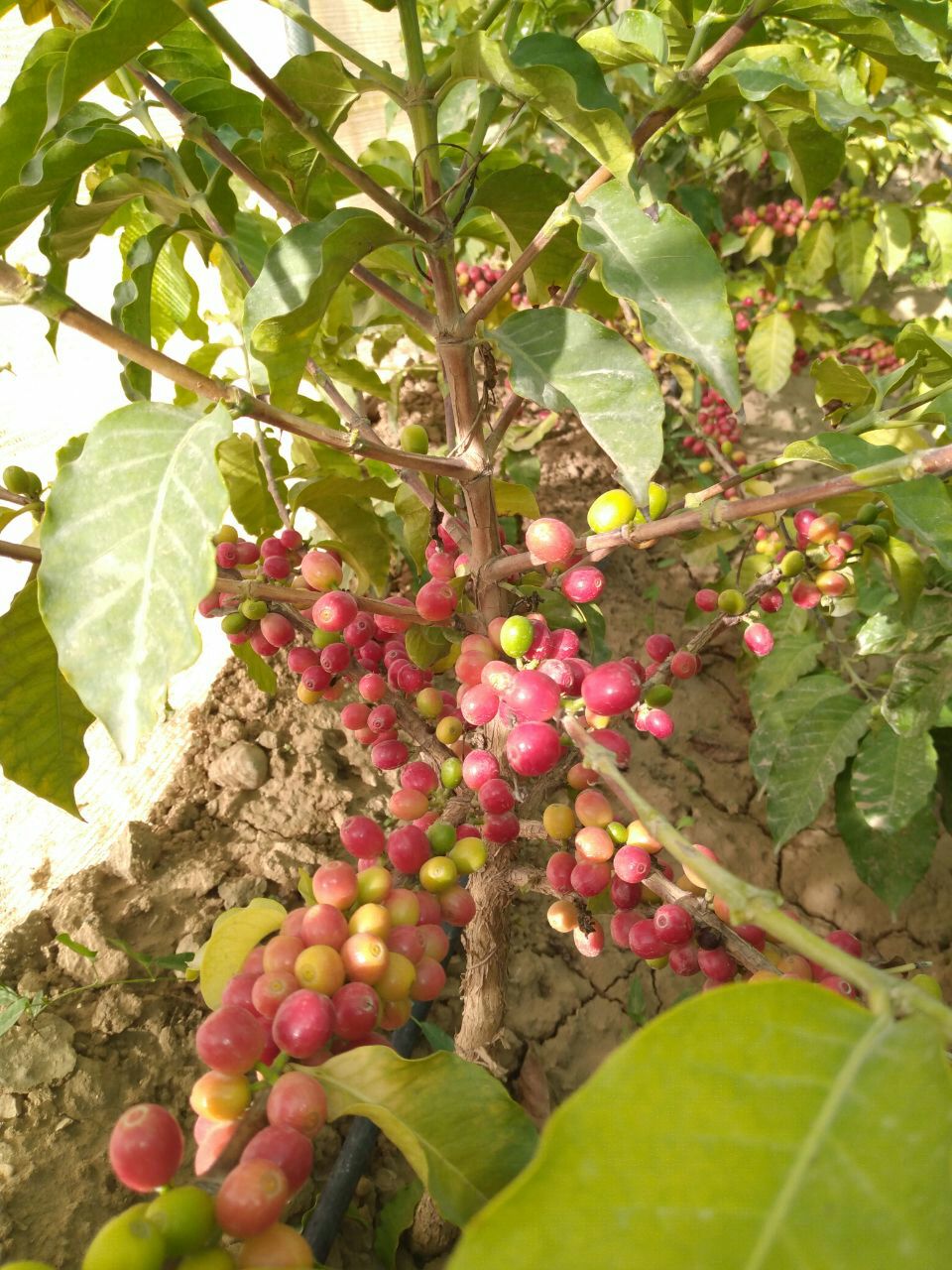Yousef Jameel, a coffee farmer from the remote area of Marhaba in Dhibeen District, Amran Governorate, is determined to see his coffee beans achieve a tasting score above 88% at the upcoming national coffee auction. It’s a goal that, if reached, could allow him to export his precious crop abroad and recoup losses exceeding ten million riyals, as he told Yemen Platform.
Five years ago, Jameel made a bold decision that changed his life and the lives of those around him. While many local farmers raced to plant qat—a crop that expanded rapidly during the years of war that began in late 2014—Jameel chose a different path. He planted 700 “Adini” coffee trees under protective shade houses. His pioneering move inspired other farmers in his village and neighboring districts to follow suit, gradually bringing coffee back to its historic place, despite the setbacks caused by conflict and climate change. There is now a growing hope among Yemenis that coffee will once again become a hallmark of Yemeni identity in Arab and international markets.
Last year, Jameel harvested his first ten kilograms of coffee beans and submitted them for evaluation, earning an impressive 87% in the second national coffee auction. His initiative has become a beacon of hope, reflecting his deep connection to the cultural and economic heritage that coffee represents for him—and for all Yemenis.
Despite coffee’s status as a cash crop, Jameel believes that reviving its cultivation is about much more: it’s about restoring the proud legacy of Yemeni coffee, once exported to the world through the thriving port of Mocha.

Overcoming Hardship with Ingenuity
Jameel acknowledges that his biggest challenge was securing water for his crops, as diesel for pumping groundwater became scarce during the war. He overcame this obstacle by working with his community to dig a deep well and install a solar-powered irrigation system, ensuring a reliable water supply for his coffee trees.
Jameel explains that water shortages and direct sunlight both affect coffee quality. That’s why the trees need shade houses or larger trees to protect them. He also points out that many of today’s farmers lack the know-how of previous generations when it comes to cultivation, harvesting, drying, storage, and marketing—all factors that can make or break a coffee crop.
The Scope of Coffee in Amran
Coffee is one of Amran’s oldest and most important crops, cultivated alongside barley, wheat, sorghum, lentils, legumes, fruits, and vegetables such as grapes, apples, pomegranates, tomatoes, potatoes, and more. According to local farmers and agricultural officials, the province boasts over 557,000 coffee trees, covering about 143 hectares. Total annual production is just over one million kilograms, averaging only two kilograms per tree—a low yield compared to other countries. In recent years, agricultural authorities have distributed more than 20,000 coffee seedlings, expanding cultivation to new districts.
Most of Amran’s coffee is now grown in districts like Masur, Al-Sawda, and Thula, with significant expansion in recent years. According to agricultural engineer Naji Salama, the average yield per hectare is only 0.57 tons, well below countries such as Malaysia (3.7 tons) and Brazil (1.9 tons). Amran is part of Yemen’s highland region, which accounts for 44% of the country’s farmland and employs over 60% of its agricultural workforce.
The Secret to High-Quality Yemeni Coffee
Coffee trees thrive at elevations between 800 and 2,000 meters, making Amran ideal for cultivation alongside other mountainous governorates like Sana’a, Taiz, Ibb, Dhamar, Saada, Hodeidah, Hajjah, and Al Mahwit. Agronomist Shawqi Hadish explains that coffee takes four to five years to bear fruit, requiring patience and investment from farmers.
Coffee is a semi-shade plant and produces its best yields under larger trees, with optimal temperatures between 20 and 27°C. The right soil pH is also crucial (between 6 and 7), but most Yemeni soils exceed this range, affecting quality. Hadish urges farmers to pick only fully ripe, red cherries and to ensure proper post-harvest practices for premium results.
If grown and cared for correctly, a single coffee tree can yield up to 40 kilograms a year, but under less favorable conditions, the harvest drops to just 5 to 10 kilograms. Other countries, he notes, outperform Yemen due to greater attention to nutrition, irrigation, shade, and potassium fertilization.
Coffee, Community, and Cultural Identity
Reviving coffee in Amran is not just about economics. These initiatives are also strengthening social bonds and preserving tribal traditions, as noted by Dr. Sareeh Al-Qaz. Agriculture remains the main source of income for most residents, fueling local economies, curbing internal migration, and sustaining Yemen’s unique cultural and environmental heritage.
A Bid for Global Recognition
In March, Yemen’s internationally recognized government submitted a file to UNESCO seeking to have Yemeni coffee inscribed on the World Heritage List—a move that underscores the crop’s cultural and economic significance. According to Dr. Mohammed Jumeih, Yemen’s permanent delegate to UNESCO, the submission highlights the knowledge, practices, and history surrounding coffee, a crop whose global journey began centuries ago from Yemen’s fabled port of Mocha.
Yemen: The Original Home of Coffee
Yemen is widely recognized as the birthplace of coffee, a status confirmed by pioneering academic research from Arwa Al-Khattabi and others. Coffee has long been at the heart of Yemen’s identity, earning global renown for its distinctive taste and diversity, shaped by the region’s unique climate and terrain.
While coffee spread across Yemen as early as the 15th century, it was only in the late 16th century that it became established in the country’s northern highlands. By the 16th and 17th centuries, Yemen was the world’s only coffee supplier, ushering in a golden age of trade and prosperity. From farm workers to merchants, the entire Yemeni society—right up to its political elites—became part of a thriving coffee industry.
Scientific studies also show that Yemen and Ethiopia share coffee’s ancestral roots, having once been part of the same ecological region. Coffee was cultivated in both Yemen and East Africa, and its story is deeply intertwined with the ancient kingdom of Sheba.
For centuries, Yemeni coffee was more than just a commodity—it was a form of currency and a source of national pride. Through the port of Mocha, Yemen introduced its legendary beans to the world, cementing its reputation as the original home of coffee.



